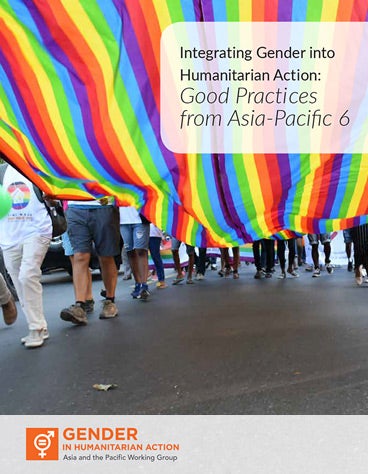
Integrating Gender into Humanitarian Action: Good Practices from Asia and the Pacific 6 - LGBTIQ+ Rights and Inclusion in Humanitarian Action and Disaster Risk Reduction

This is the sixth compilation of good practices on integrating gender into humanitarian action in Asia, developed on behalf of the Regional Network Working Group on Gender in Humanitarian Action in Asia-Pacific.Despite recent strides towards ensuring the safety and enjoyment of equal rights by LGBTIQ+ persons in the Asia-Pacific region, persistent and sizeable obstacles to inclusion remain, including harmful legal frameworks and religious, cultural, and societal stigmas which, when combined with the impact of a natural disaster or armed conflict, further exclude LGBTIQ persons from the protections they are entitled to and render them uniquely vulnerable. Evidence from recent disasters demonstrate that humanitarian response furthermore often continues to perpetuate the exclusion and marginalization of LGBTIQ+ populations; practices such as binary gender-segregated shelter and sanitation facilities, which require identification that legally affirms one’s gender identity to access aid, and narrow definitions of the ‘households’ that form the basis of aid distributions or needs assessments, make the process of seeking aid exclusionary and harmful. At the same time, accounts from recent disasters in the Asia-Pacific region also demonstrates the capabilities of LGBTIQ+ persons to cope in the aftermath of disasters, and to leverage existing social networks for the protection and recovery of themselves and their communities. In this volume, we highlight case studies, references, and inputs on actions that promote LGBTIQ+ rights and inclusion in humanitarian action and disaster risk reduction.